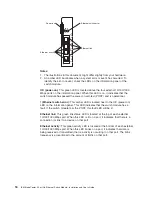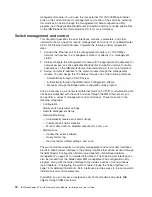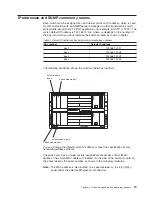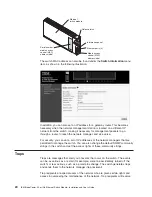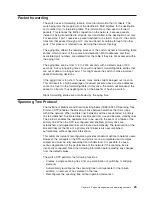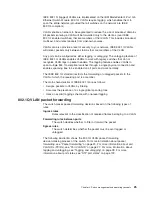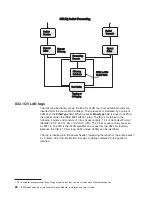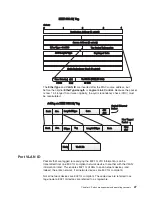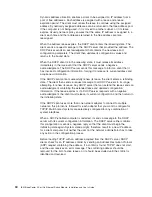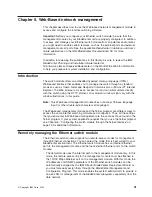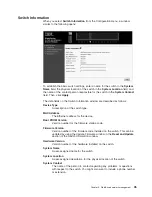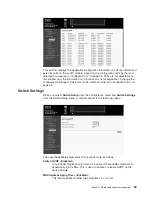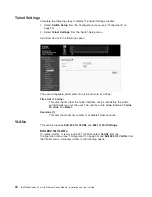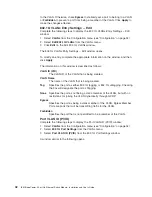
Before the adoption of 802.1Q VLANs, port-based and MAC-based VLANs were in
common use. These VLANs relied upon a port VLAN ID (PVID) to forward packets.
A packet received on a given port would be assigned that port PVID and then be
forwarded to the port that corresponded to the packet destination address (found in
the switch forwarding table). If the PVID of the port that received the packet is
different from the PVID of the port that is to transmit the packet, the switch will drop
the packet.
Within the switch, different PVIDs mean different VLANs (remember that two VLANs
cannot communicate without an external router). So, VLAN identification based
upon the PVIDs cannot create VLANs that extend outside a given switch (or switch
stack).
Every physical port on a switch has a PVID. 802.1Q ports are also assigned a
PVID, for use within the switch. If no VLANs are defined on the switch, all ports are
then assigned to a default VLAN with a PVID of 1. Untagged packets are assigned
the PVID of the port on which they were received. Forwarding decisions are based
upon this PVID, where VLANs are concerned. Tagged packets are forwarded
according to the VID contained within the tag. Tagged packets are also assigned a
PVID, but the PVID is not used to make packet-forwarding decisions; the VID is.
Tag-aware switches must keep a table to relate PVIDs within the switch to VIDs on
the network. The switch will compare the VID of a packet to be transmitted to the
VID of the port that is to transmit the packet. If the two VIDs are different, the
switch will drop the packet. Because of the existence of the PVID for untagged
packets and the VID for tagged packets, tag-aware and tag-unaware network
devices can coexist on the same network.
A switch port can have only one PVID but can have as many VIDs as the switch
has memory in its VLAN table to store them.
Because some devices on a network might be tag-unaware, a decision must be
made at each port on a tag-aware device before a packet is transmitted, whether or
not to tag the packet. If the transmitting port is connected to a tag-unaware device,
the packet should be untagged. If the transmitting port is connected to a tag-aware
device, the packet should be tagged.
Tagging and untagging
Every port on an 802.1Q compliant switch can be configured as tagging or
untagging.
Ports with tagging enabled will put the VID number, priority, and other VLAN
information into the header of all packets that flow into and out of it. If a packet has
previously been tagged, the port will not alter the packet, thus keeping the VLAN
information intact. The VLAN information in the tag can then be used by other
802.1Q compliant devices on the network to make packet-forwarding decisions.
Ports with untagging enabled will strip the 802.1Q tag from all packets that flow into
and out of those ports. If the packet does not have an 802.1Q VLAN tag, the port
will not alter the packet. Thus, all packets received by and forwarded by an
untagging port will have no 802.1Q VLAN information. (Remember that the PVID is
only used internally within the switch). Untagging is used to send packets from an
802.1Q-compliant network device to a noncompliant network device.
28
IBM BladeCenter 4-Port Gb Ethernet Switch Module: Installation and User’s Guide
Summary of Contents for BladeCenter Management Module
Page 1: ...IBM BladeCenter 4 Port Gb Ethernet Switch Module Installation and User s Guide ERserver ...
Page 2: ......
Page 3: ...IBM BladeCenter 4 Port Gb Ethernet Switch Module Installation and User s Guide ERserver ...
Page 9: ...Japanese Voluntary Control Council for Interference VCCI statement 159 Index 161 Contents vii ...
Page 10: ...viii IBM BladeCenter 4 Port Gb Ethernet Switch Module Installation and User s Guide ...
Page 18: ...xvi IBM BladeCenter 4 Port Gb Ethernet Switch Module Installation and User s Guide ...
Page 32: ...14 IBM BladeCenter 4 Port Gb Ethernet Switch Module Installation and User s Guide ...
Page 92: ...74 IBM BladeCenter 4 Port Gb Ethernet Switch Module Installation and User s Guide ...
Page 134: ...116 IBM BladeCenter 4 Port Gb Ethernet Switch Module Installation and User s Guide ...
Page 136: ...118 IBM BladeCenter 4 Port Gb Ethernet Switch Module Installation and User s Guide ...
Page 138: ...120 IBM BladeCenter 4 Port Gb Ethernet Switch Module Installation and User s Guide ...
Page 155: ...Appendix D Understanding and troubleshooting the Spanning Tree Protocol 137 ...
Page 158: ...140 IBM BladeCenter 4 Port Gb Ethernet Switch Module Installation and User s Guide ...
Page 172: ...154 IBM BladeCenter 4 Port Gb Ethernet Switch Module Installation and User s Guide ...
Page 177: ...Japanese Voluntary Control Council for Interference VCCI statement Appendix G Notices 159 ...
Page 178: ...160 IBM BladeCenter 4 Port Gb Ethernet Switch Module Installation and User s Guide ...
Page 183: ......
Page 184: ... Part Number 59P6530 Printed in U S A 1P P N 59P6530 ...



